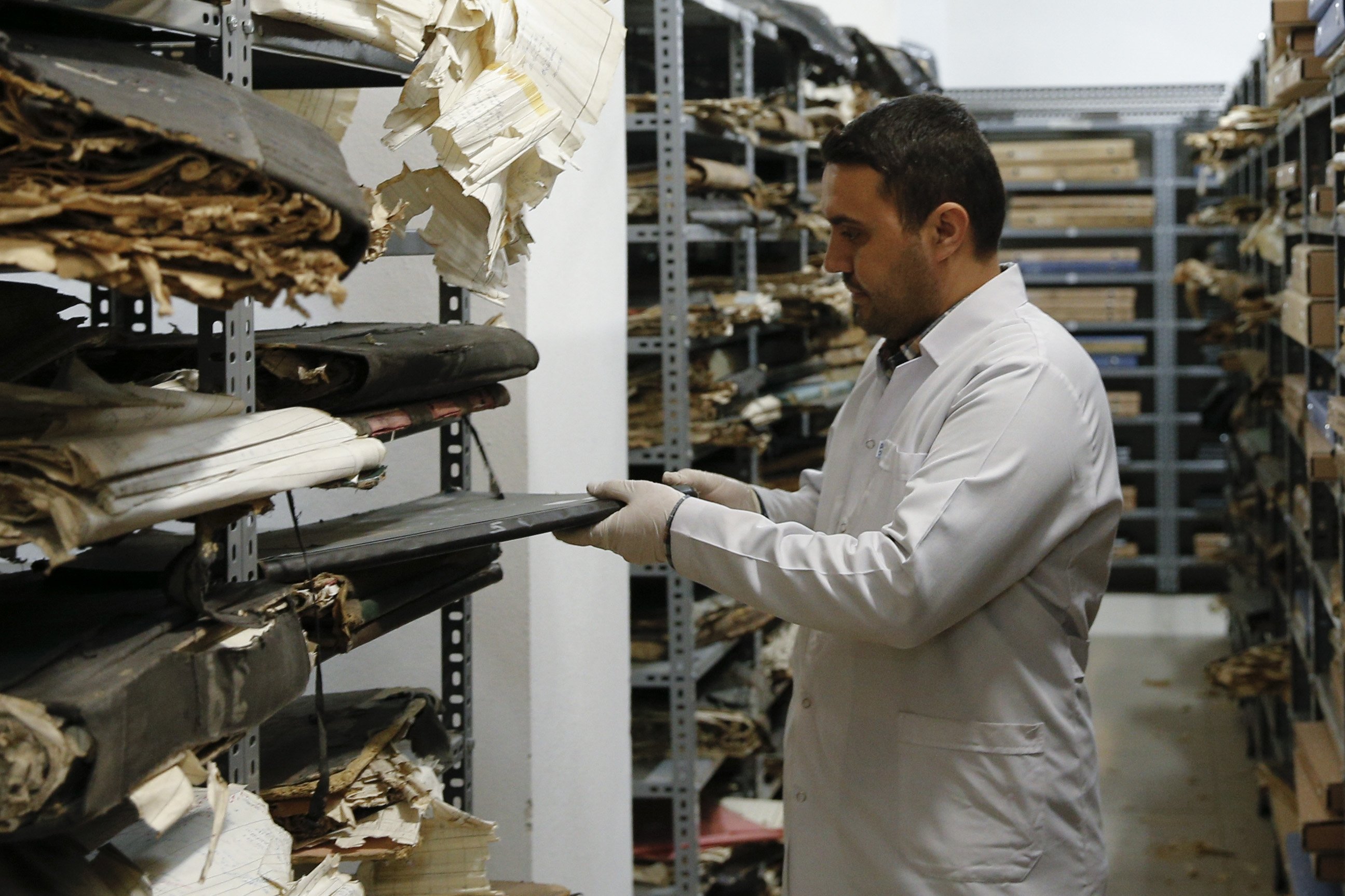© Turkuvaz Haberleşme ve Yayıncılık 2026
The Turkish Population Archive, under the Ministry of Interior General Directorate of Population and Citizenship Affairs, encompasses approximately 110,000 population registers and 500 million population base documents.
The project for its digitalization called 'The Digital Archive Project' is being carried out to protect and save archive documents that have become worn out and damaged due to continuous use and to prevent their misplacement during disasters such as fire, earthquake, and flood.
To date, approximately 470 million documents have been digitized with the efforts of 29 restorers on duty.
The director of the Records Management and Restoration Branch of the General Directorate of Population and Citizenship Affairs Archives Department Emin Kutluğ told Anadolu Agency (AA) that there are millions of documents containing information such as identity, residence, and family ties of the citizens of Türkiye from past to present in the archives of the General Directorate.
Explaining the importance of preserving this archive and transferring it to future generations, Kutluğ said: "Our archive contains legal documents that we call live recordings. So much so that when any record is lost, all legal and financial rights of that person will be deleted. In this respect, these documents must be kept very safely."
Kutluğ stated that some of the population documents, which are single copies and got perished over the years, are first evaluated and then combined into their classification group. "Those in need of restoration are forwarded to the restoration unit," he added.
Stating that the documents contain information covering 142 years on the inhabitants of 81 provinces, Kutluğ said: "The oldest one of our population registers belongs to 1881. In 1881, the female population was registered and included in the census for the first time."
He noted that the restoration of 1.5 million documents has been completed through theirs.
''Approximately 70,000 of the 110,000 volumes of population registers need restoration. The restoration and digital shooting of 40,000 of our lightly damaged notebooks have been completed so far. The remaining 70,000 notebooks will be classified and restored as soon as possible,'' he explained.
''We are working on completing it and converting it into a digital archive immediately," Kutluğ underscored.
Saying that the information transferred to the digital environment will be easier to access and the relevant document will not need to be used repeatedly, Kutluğ noted: "Within the scope of the e-Government application, the images of these will be sent to the relevant places. Thus, our experts will only carry out their operations on the computer."
"The Turkish Population Archive is Türkiye's national memory. We are working to preserve this memory and will transfer it to future generations," Kutluğ said.
Restorer Gülsüm Özkan said that the documents are received by them after they are classified in the classification section, noting that during the restoration work, they first look at the general condition of the papers and then sort them out.
''If there are curled or torn documents, we first continue with the recovery phase. After performing the cleaning phase with brushes and erasers suitable for the paper, we implement the consolidation process by using special adhesives and chemicals suitable for the paper."
Özkan stated they are also working on documents that became unreadable because they were deformed in the restoration department and continued as follows: "We use special chemical solutions to strengthen the unreadable documents and the special chemical solutions to open the pages and fix them. Then, we apply special processes such as finishing with acid-free papers and gluing on the missing, torn parts."

Explaining that the documents are sent to the digital archive section after the restoration is completed, Özkan said: "The documents scanned in the digital archive are then sent to the binding section for binding. The documents bound there are put in the archive sections in special boxes for later archiving."
Özkan pointed out that the restoration processes ensure the preservation and repair of the documents, ensuring their sustainability.
Preserving the population data in a digital database is an essential move for maintaining information on the population, its figures, and changes in population statistics throughout history.
Türkiye's population stood at more than 84.6 million in 2021, based on figures from Dec. 31, 2021, Turkish Statistical Institute (TurkStat) revealed. The institute highlighted that the population increased for decades. The most concrete figure was available for 1927 when the population was recorded at over 13.6 million people.
